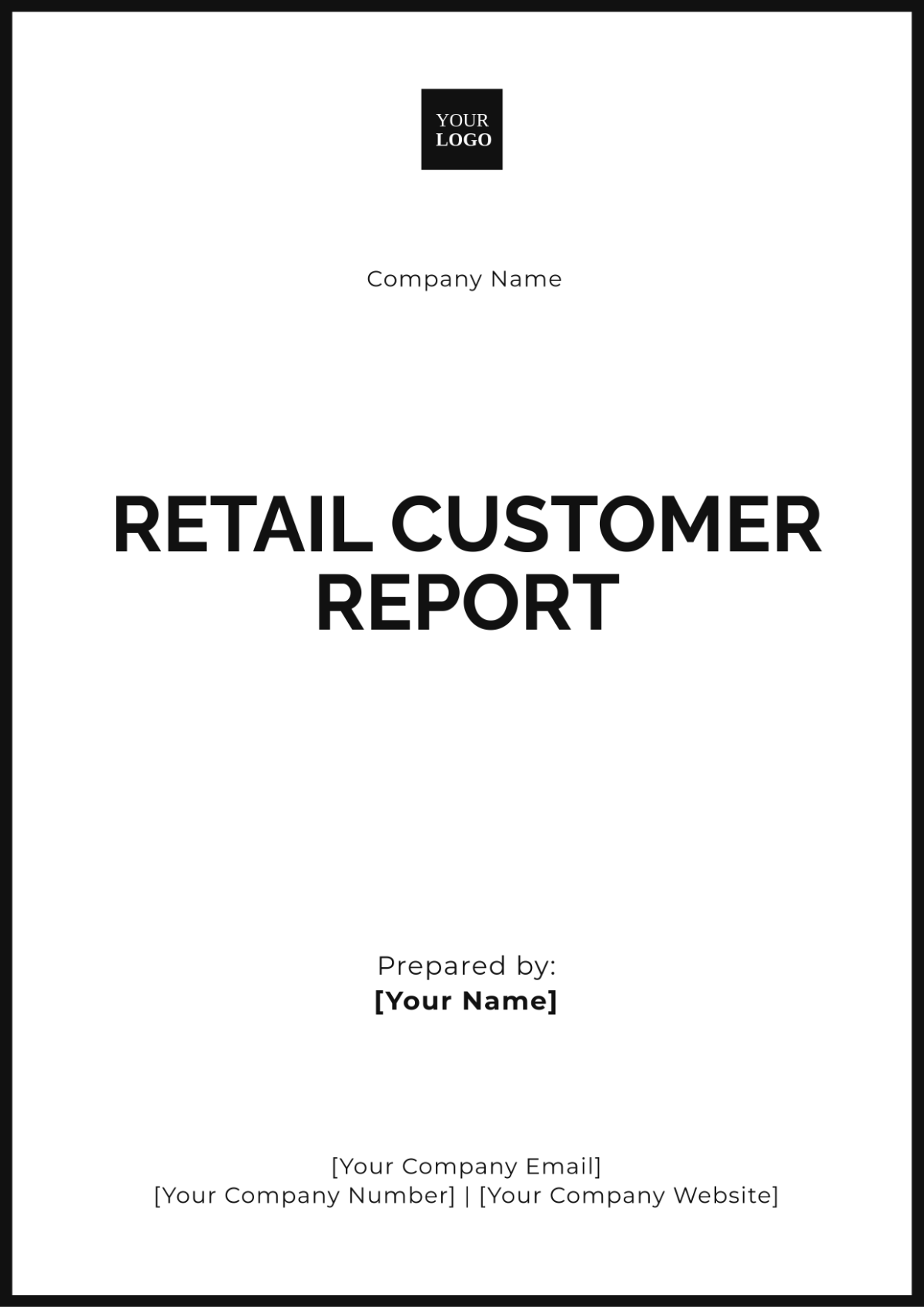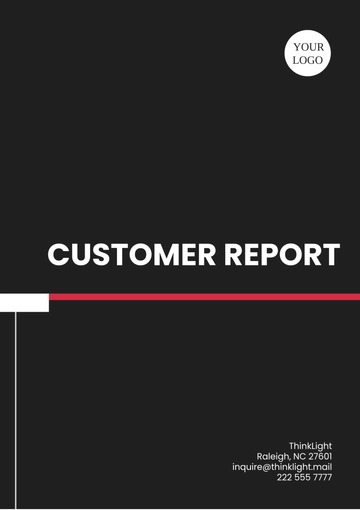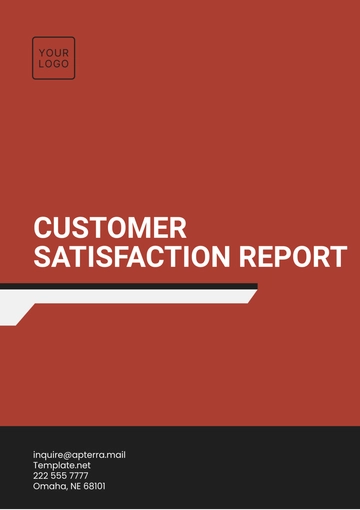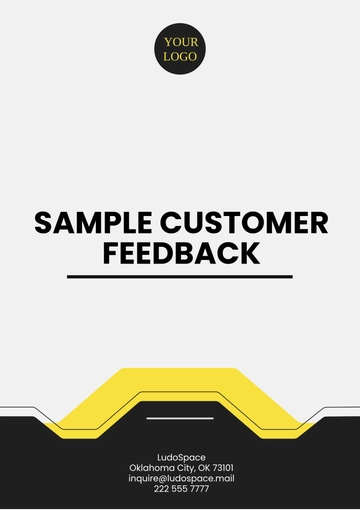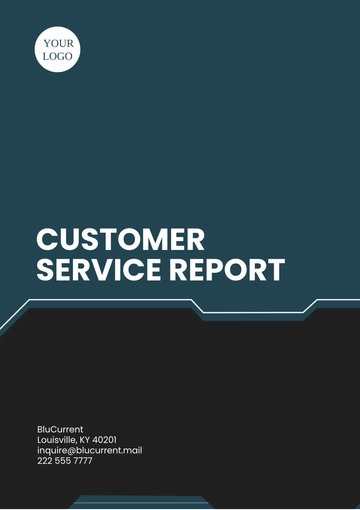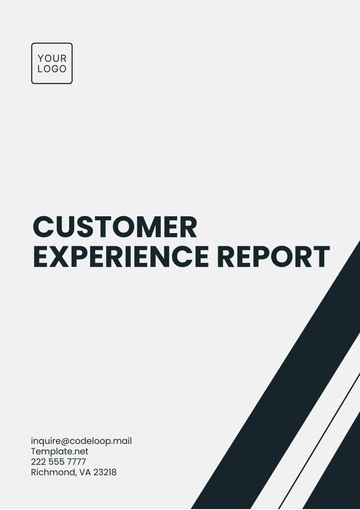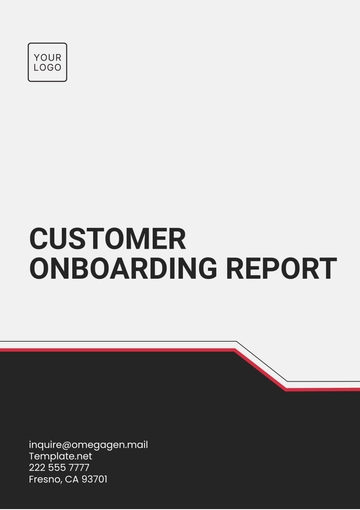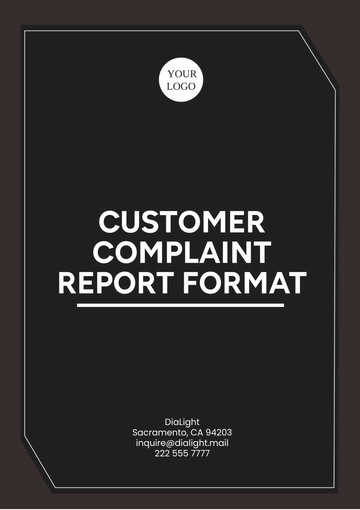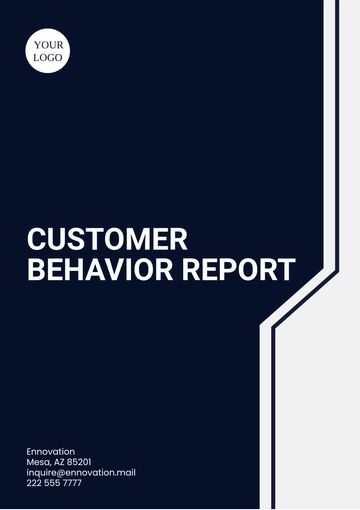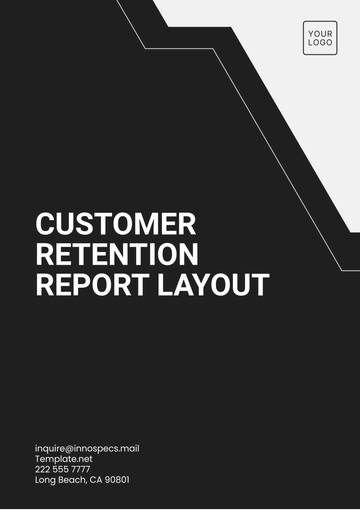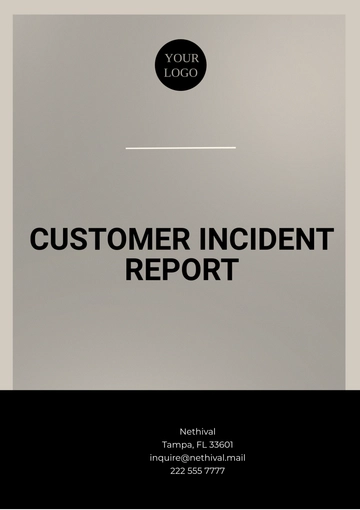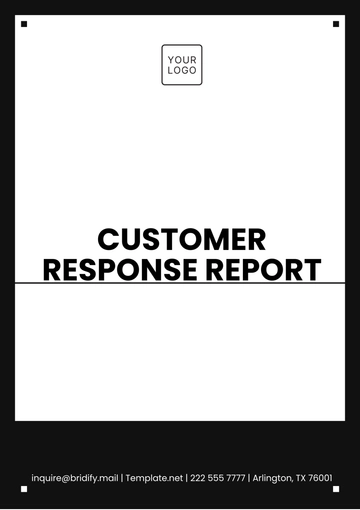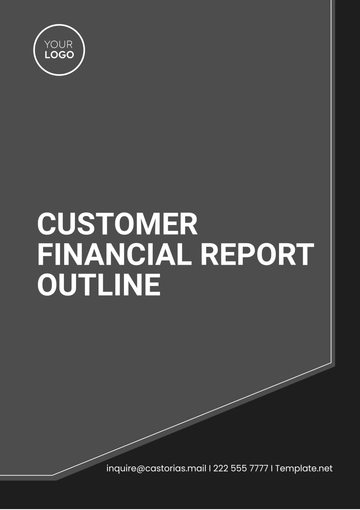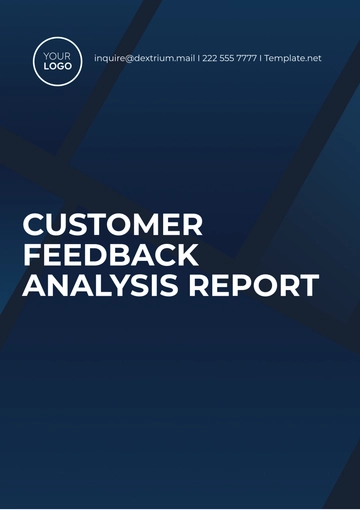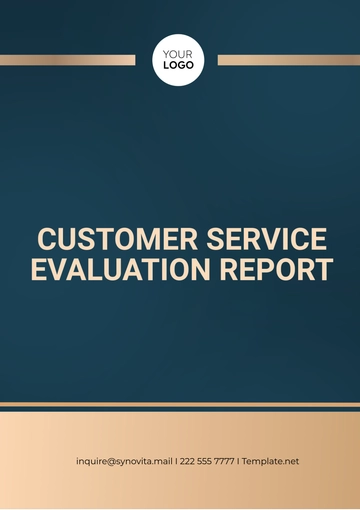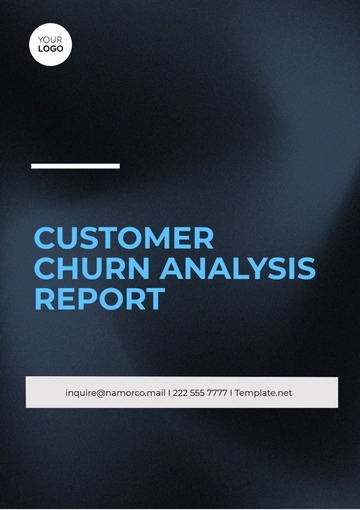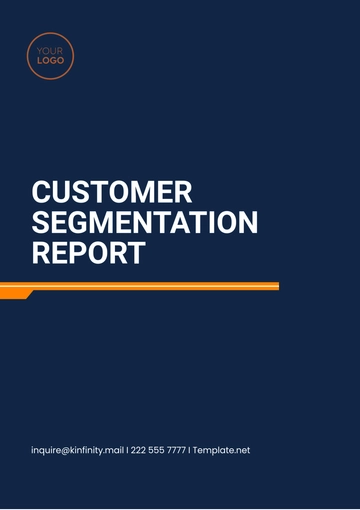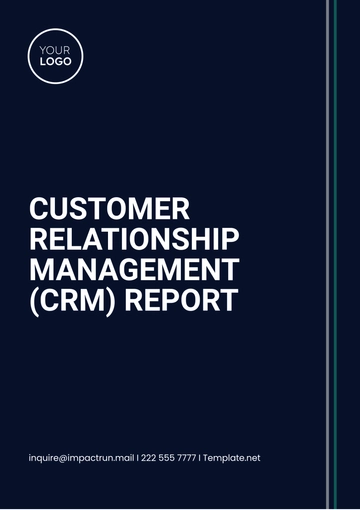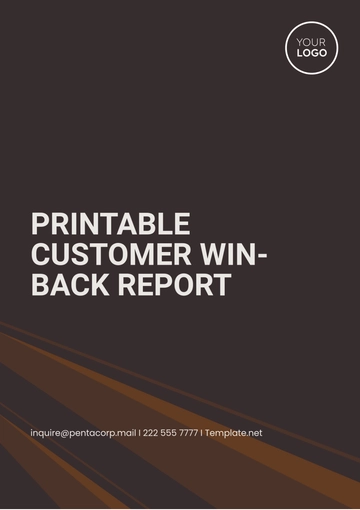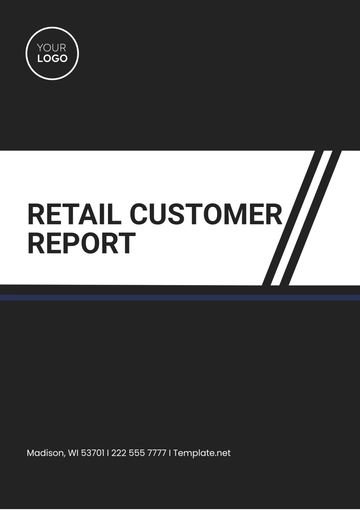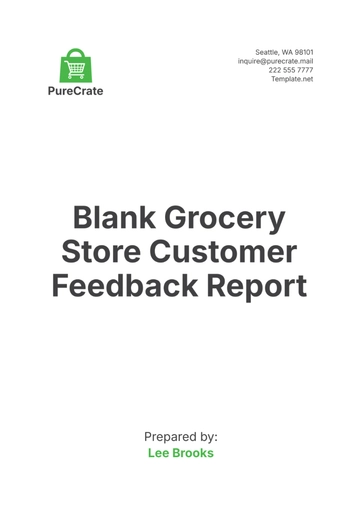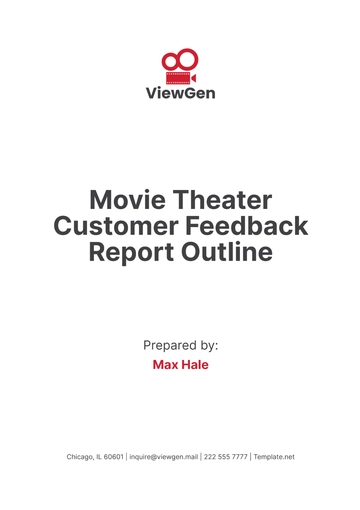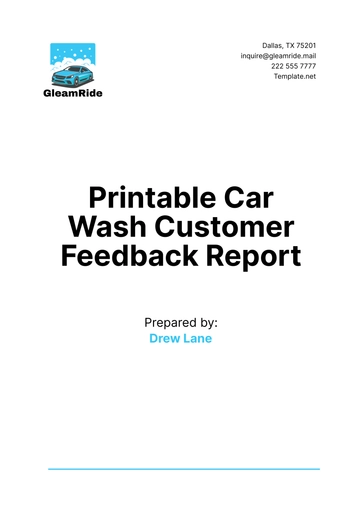Retail Customer Report
Prepared by: [Your Name]
Company: [Your Company Name]
Date: [Date]
I. Executive Summary
This Retail Customer Report provides a comprehensive analysis of customer-related data and trends within the business. The report focuses on understanding customer behavior, preferences, purchasing patterns, satisfaction levels, and other relevant metrics. The aim is to offer insights that help enhance the customer experience and drive business growth. Key findings indicate a trend towards online shopping, with a 30% increase in online transactions compared to the previous year, increased interest in sustainability reflected by 40% of customers prioritizing eco-friendly products, and a significant correlation between customer satisfaction and repeat purchases, revealing that 80% of satisfied customers are likely to make additional purchases within six months.
II. Introduction
Customer-related data analysis is essential for retail businesses to stay competitive and meet evolving customer expectations. This report delves into various dimensions of customer interaction with the business, leveraging data to uncover valuable insights. The analysis encompasses:
Buying Behaviors: Examining how and when customers prefer to shop.
Demographic Preferences: Identifying key demographic segments driving sales.
Feedback on Services: Analyzing customer reviews and satisfaction ratings to pinpoint areas for improvement.
By equipping stakeholders with actionable knowledge, this report aims to enhance customer loyalty, optimize marketing strategies, and improve overall service delivery.
III. Methodology
The data for this report was collected from multiple sources, including:
Sales Transactions: Analysis of over 10,000 sales records from the past year to identify trends in purchasing behavior.
Customer Surveys: Conducted with a sample of 1,500 customers to gather qualitative feedback on shopping experiences.
Social Media Interactions: Monitoring sentiment analysis from platforms such as Twitter and Facebook to assess public perception and brand engagement.
Online Reviews: Reviewing 500 customer reviews from major e-commerce platforms to understand customer satisfaction levels.
Buying Behaviors: Examining how and when customers prefer to shop.
Demographic Preferences: Identifying key demographic segments driving sales.
Feedback on Services: Analyzing customer reviews and satisfaction ratings to pinpoint areas for improvement.
By equipping stakeholders with actionable knowledge, this report aims to enhance customer loyalty, optimize marketing strategies, and improve overall service delivery.
A. Data Analysis Techniques
Quantitative Analysis: Sales data was analyzed using statistical software to uncover patterns and trends over the past year.
Qualitative Assessment: Open-ended survey responses were categorized into themes to identify common feedback points.
Trend Analysis: Social media sentiment was evaluated using tools like Hootsuite and Brandwatch to gauge customer sentiment over time.
A random sampling method was employed to ensure diversity and accuracy in survey responses. Statistical tools, including regression analysis and correlation coefficients, were used to interpret the data and identify significant trends.
IV. Key Findings
A. Purchasing Patterns
The analysis reveals several insights into customer purchasing patterns:
Pattern | Description |
|---|
Peak Shopping Times | Customers predominantly shop online during evenings and weekends, with 65% of sales occurring after 6 PM. |
Preferred Channels | Online platforms have a 25% greater preference over physical stores, with mobile shopping rising to 50% of online transactions. |
Repeat Purchases | 70% of repeat purchases are made within three months of the initial purchase, indicating a strong follow-up need for customer engagement. |
B. Customer Preferences
There is a notable shift in customer preferences, including:
Increased Demand for Sustainable Products: 75% of respondents expressed a willingness to pay a premium for eco-friendly and ethically sourced products.
Personalized Shopping Experiences: 60% of customers indicated a preference for tailored recommendations based on past purchases.
Interest in Loyalty Programs: 45% of respondents are motivated to engage with loyalty programs that offer exclusive discounts and rewards.
C. Customer Satisfaction
Customer satisfaction has shown positive trends, particularly in areas such as:
Customer Service Efficiency: A 90% satisfaction rating in customer service interactions.
Product Quality and Variety: Positive feedback on the diversity of products available, with 85% of customers expressing satisfaction.
Ease of Website Navigation: 80% of customers found the website user-friendly.
However, areas like delivery speed and post-sale support require improvement, with 40% of customers reporting delays in order fulfillment.
V. Recommendations
Based on the findings, several recommendations are proposed to enhance the customer experience:
Optimize Online Shopping Platforms: Enhance website performance and mobile optimization to handle increased traffic during peak times, especially during the holiday season.
Expand Sustainable Product Range: Partner with eco-friendly brands to broaden the selection of sustainable products, catering to the rising demand.
Implement a Robust Loyalty Program: Design a tiered loyalty program that rewards customers for repeat purchases and referrals, encouraging long-term engagement.
Improve Delivery Logistics: Invest in partnerships with local delivery services to reduce wait times and enhance post-sale support, providing real-time updates on order status.
VI. Conclusion
The Retail Customer Report highlights critical insights into customer behavior and satisfaction. By focusing on these findings and implementing the recommended strategies, the retail business can significantly enhance its customer engagement and retention, ultimately leading to increased profitability and growth. Continuous monitoring of customer trends and preferences will be vital to maintaining a competitive edge and adapting to market changes.
VII. Appendices
The following appendices provide additional data and resources referenced in the report:
Appendix A: Detailed survey questionnaire, including demographic questions and feedback on specific products and services.
Appendix B: Data tables and charts illustrating purchasing trends, including visual representations of peak shopping times and preferred channels.
Appendix C: Supplementary data on customer feedback and sentiment analysis, including verbatim quotes from customer surveys and social media.
Customer Report Templates @ Template.net
